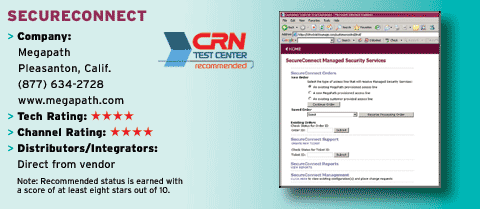Observer 11 Offers In-Depth VoIP Analysis
There aren't a lot of tools out there to help implement or troubleshoot VoIP. And that's where a tool like Network Instruments' Observer comes into play.
Observer is a Windows-based network monitor and protocol analyzer utility for Ethernet, Wireless 802.11b/a/g, Token Ring and FDDI. Out of the box, Observer can monitor single-segment networks, and using optional Probes, Observer can reveal conditions on remote networks. Software Probes offer remote analysis and monitoring for 10/100 Ethernet, 802.11 a/b/g Wireless, Token Ring and FDDI networks, and hardware-based Probes are available for wire-speed, full-duplex Gigabit and T1/E1 or HSSI/DS3 WAN networks. Observer is a great help in complying with regulations such as Sarbanes-Oxley, network forensics and network troubleshooting.
What the Test Center found unique about the latest release of Observer, version 11, is that it can perform in-depth VoIP analysis, is written as a native 64-bit application and has a time-based navigation utility that helps solution providers wade through enormous amounts of data. The utility can analyze capture histories as large as 8 Tbytes with nanosecond resolution. Other enhancements include Network Trending that can track application server performance, wireless statistics and VLAN statistics. Also, pattern filters allow regular expression (RegEx) pattern matching, and Citrix protocol decoding is now supported.
Observer lets a network administrator see network traffic in realtime and make decisions based on fact rather than speculation. The effectiveness of network changes can be observed instantly, and trending data can be collected over a period of days, weeks or months. Triggers and alarms can be set to help pinpoint problems; the triggers can activate message windows, captures, logs and trouble tickets, or even contact an administrator via e-mail or pager. In addition, a traffic generator and packet buffer replay allows for stress-testing and controlled duplication of specific problems.
Observer is available with three levels of licensing to meet the needs and budget of any network, from SMB up to enterprise; the three levels include the base Observer package, Expert Observer and the Observer Suite. VoIP Expert is part of Expert Observer, which costs $2,895.
VoIP Expert helps solution providers manage, troubleshoot and maintain VoIP traffic across a network. Observer offers realtime statistics, analysis and reports for all levels of VoIP traffic, so it can be used to highlight all levels of VoIP activity or the details of a specific conversation. VoIP Expert can provide the solution provider with aggregate statistics for overall VoIP traffic, call summary and quality scoring. It can gather per-call metrics including call status, current jitter, call setup, duration, teardown, MOS/R-factor and quality-of-service (QoS) prioritization.
Observer's VoIP Expert provides comprehensive summaries of VoIP traffic and QoS, call detail records, packet statistics, call start times and durations. QoS levels are reported by call, packet and protocol. VoIP Expert can display the individual Mean Opinion Score (MOS) and R-factor for individual calls or as an average for all calls. A MultiHop Analysis can track conversations and transactions through up to 10 segments, hops and routes, and it can pinpoint and eliminate delays that occur at any point during transactions. The MultiHop Analysis can pinpoint bottlenecks within specific conversations and determine whether slowdowns are caused by network delay or system processes. Solution providers can use VoIP Expert to gauge VoIP utilization vs. other network traffic to help plan network upgrades.
The Observer 11 is a product that VARs can choose to use in house as part of a service offering, or to resell to enterprises that have their own network troubleshooting staffers. With that in mind, Network Instruments needs to serve two masters when it comes to the channel. The company's two-tier channel program addresses both needs adequately. Dealer-level partners will have to follow a three-step process to become authorized. Step 1 consists of engineering training; step 2 is sales training; and step 3 consists of order placement training. The company did not outline what the requirements were for the reseller level.
No margin information was provided on the products, other than partners can expect to garner 60 percent of their revenue from product margin and 40 percent of their revenue from associated services. All training is offered at no charge, as are demo versions of the product. The company offers deal registration compensation for authorized partners, along with leads and a protected Web portal for partners. Phone support is offered for partners as well as end users for no charge.
